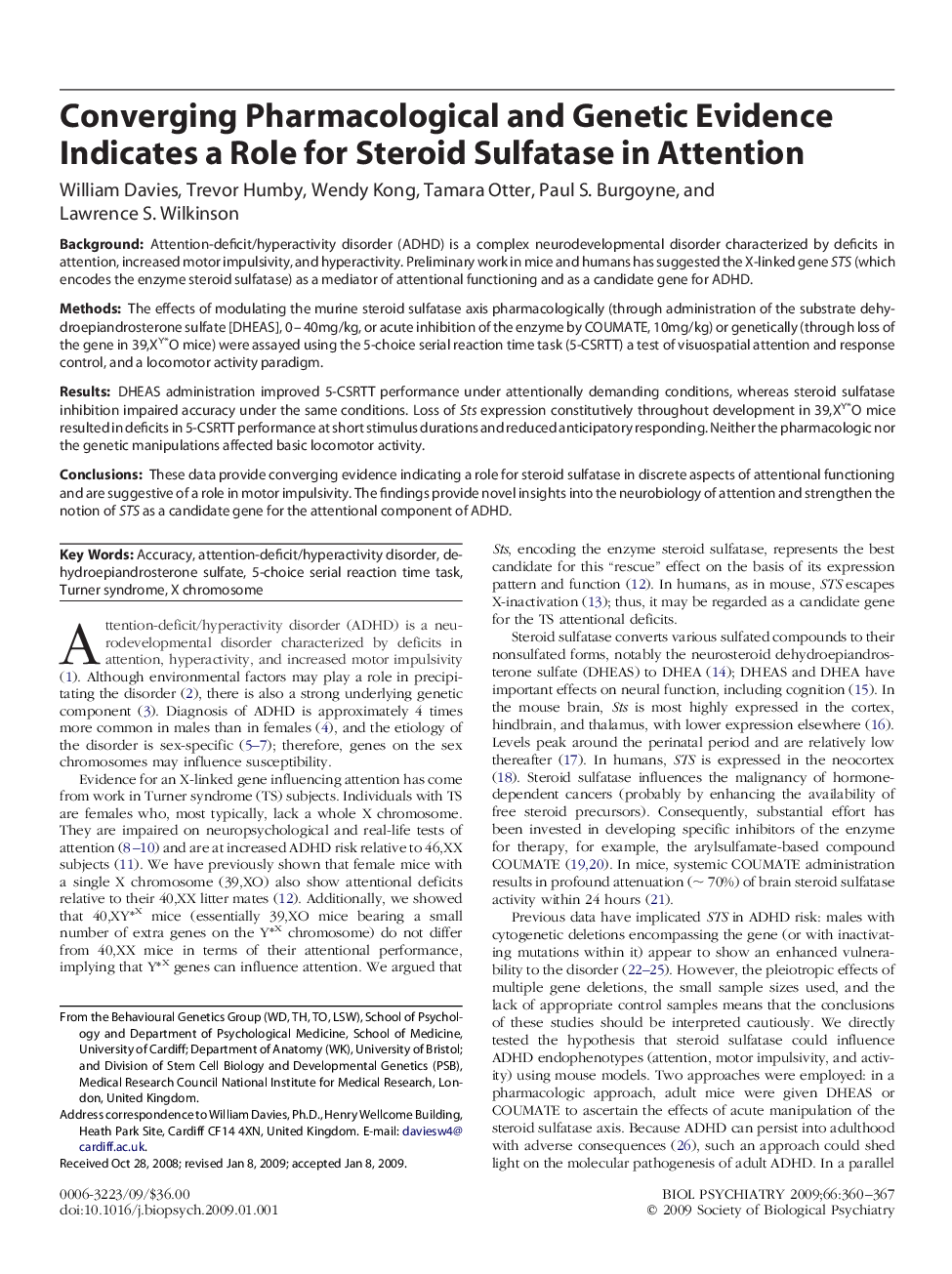| Article ID | Journal | Published Year | Pages | File Type |
|---|---|---|---|---|
| 6228590 | Biological Psychiatry | 2009 | 8 Pages |
BackgroundAttention-deficit/hyperactivity disorder (ADHD) is a complex neurodevelopmental disorder characterized by deficits in attention, increased motor impulsivity, and hyperactivity. Preliminary work in mice and humans has suggested the X-linked gene STS (which encodes the enzyme steroid sulfatase) as a mediator of attentional functioning and as a candidate gene for ADHD.MethodsThe effects of modulating the murine steroid sulfatase axis pharmacologically (through administration of the substrate dehydroepiandrosterone sulfate [DHEAS], 0-40mg/kg, or acute inhibition of the enzyme by COUMATE, 10mg/kg) or genetically (through loss of the gene in 39,XY*O mice) were assayed using the 5-choice serial reaction time task (5-CSRTT) a test of visuospatial attention and response control, and a locomotor activity paradigm.ResultsDHEAS administration improved 5-CSRTT performance under attentionally demanding conditions, whereas steroid sulfatase inhibition impaired accuracy under the same conditions. Loss of Sts expression constitutively throughout development in 39,XY*O mice resulted in deficits in 5-CSRTT performance at short stimulus durations and reduced anticipatory responding. Neither the pharmacologic nor the genetic manipulations affected basic locomotor activity.ConclusionsThese data provide converging evidence indicating a role for steroid sulfatase in discrete aspects of attentional functioning and are suggestive of a role in motor impulsivity. The findings provide novel insights into the neurobiology of attention and strengthen the notion of STS as a candidate gene for the attentional component of ADHD.
